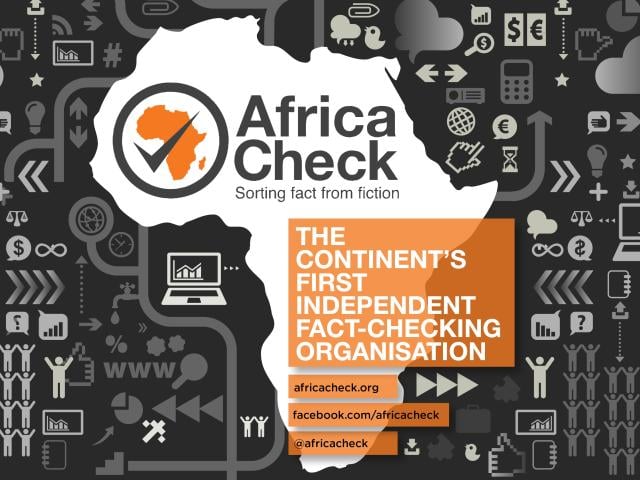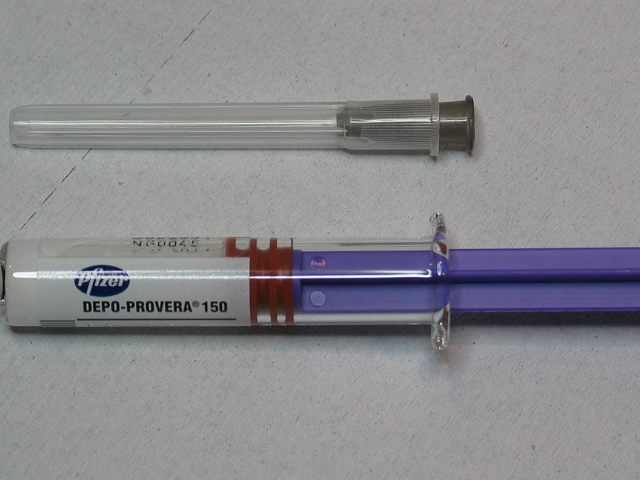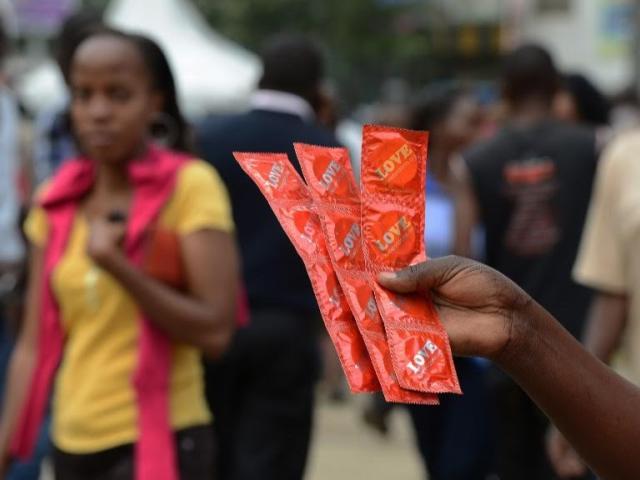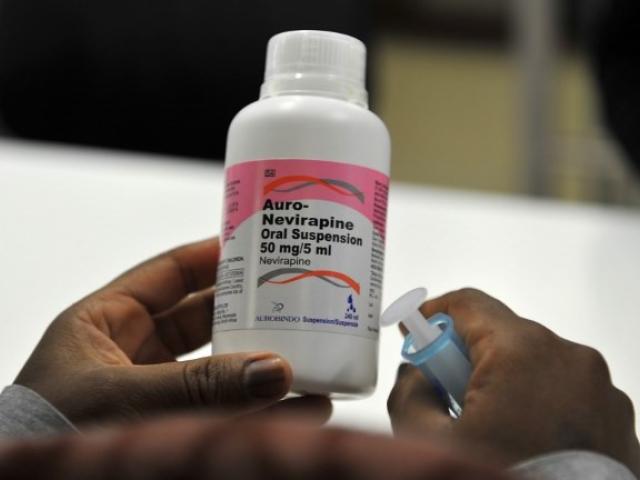-
The Neem Foundation links HIV to “immunodeficiency”, claiming the virus infects people with “poor immune systems”. But this puts the cart before the horse: HIV targets immune system cells, decreasing the body’s ability to fight infections.
-
HIV can and does infect people with a “strong” immune system. Somehow treating or killing bacteria that otherwise affects the immune system cannot “kill” an HIV infection.
-
Research is ongoing into an effective HIV cure and the Neem Foundation seizes on nuggets of truth within this research, but in order to make irresponsible and dangerous promises.
“We would like to share with the world about the discovery of the HIV cure”, begins a lengthy post on Facebook by the Neem Foundation, a Kenya-based organisation advertising a herbal remedy for the human immunodeficiency virus (HIV).
But it comes at a steep price – the concoction will set you back US$1,500 for a six month “dose”. The foundation claims it can cure HIV, eliminating the need to take established medicines for treating the virus.
The claims also appear on the Neem Foundation website, as well as on a series of posts on HIV/AIDs CURE, a Facebook group with over 3,000 followers, here, here, here and here.
The human immunodeficiency virus, or HIV, attacks the body’s immune system. If not controlled with proper medical care, it leads to acquired immunodeficiency virus, more commonly known as Aids.
While a handful of people have been completely cured of HIV, for some 38 million people living with the virus worldwide, a medically proven cure has remained out of reach.
The Neem Foundation also claims that HIV only infects people who already have weakened immune systems, and that strong immune systems simply destroy the virus immediately. It proposes a cure that destroys bacteria and “flushes out” HIV in the body, allowing the newly strengthened immune system to kill the virus.
Is this an accurate description of how HIV is contracted and then treated? We evaluated the evidence and found a sophisticated story that strays far from the science.
No response from Neem Foundation
Facebook groups linked to the Neem Foundation are filled with supposed testimonials from customers who they say have been “cured” of HIV, such as here and here.
Another post claims to show photos of people gathering outside clinics to buy the HIV “cure”. One shows boxes apparently containing the treatment, ready to be shipped to patients across Africa.
The Neem Foundation claims to have “cured hundreds” of HIV-positive people.
Africa Check reached out to the foundation to request evidence for any of the claims made on Facebook or its website. At the time of writing, we had not received a response.
HIV has led to the death of over 40 million people since the emergence of the disease in the early 1980s. With consistent access to evidence-based treatments like antiretroviral therapy (ART), today people with HIV are living longer and healthier lives. But these treatments control the virus, rather than cure it.
The Neem Foundation claims to have a complete cure for HIV, based on the idea that the virus only infects people who already have a compromised immune system. But experts say that this is getting it backwards. To understand why, it is important to know how HIV affects the body.
HIV can cause immunodeficiency, but not the other way around
According to the World Health Organization, the HI virus mostly targets specific cells that work as part of the immune system, called CD4 cells (or “helper T cells”). These are a kind of white blood cell, and they play an important role in fighting disease.
As the number of CD4 cells (often called a CD4 cell count) decreases, so does the body’s ability to fight infection.
Africa Check reached out to Prof Salim Abdool Karim, director of the Centre for the Aids Programme of Research in South Africa (Caprisa). HIV damages the immune system, leading to immunodeficiency, he said. This is when “the immune system is no longer able to fend off infections”.
This can eventually lead to Aids, where the body is vulnerable to “opportunistic infections”, Abdool Karim told Africa Check. These are infections that the body would normally be able to fight off, but is not able to in a state of immunodeficiency.
So HIV causes a weakened immune system, or immunodeficiency, because it attacks some of the cells your body uses to fight off disease.
Weakened immunity does not cause HIV – but some people with STIs are more at risk
The claim being made by the Neem Foundation is that people who already have weakened immune systems are more easily infected by HIV.
Dr Nikki Gentle researches immunogenetics and functional genomics at the University of the Witwatersrand in Johannesburg, South Africa. She has worked in HIV research for over a decade and studies factors that influence how people respond to infection by viruses like HIV.
Someone who is malnourished or has vitamin deficiencies is not more vulnerable to HIV infection, she told Africa Check: “That’s got nothing to do with it.”
Abdool Karim agreed: “HIV can infect anyone, regardless of their immune state.”
But there may be some other factors that could make infection more likely. There is, for example, a relationship between HIV infection and other sexually-transmitted infections or diseases (STIs or STDs). According to the US Centres for Disease Control and Prevention (CDC), people who have an STD are “more likely to get HIV, when compared to people who do not have STDs”.
This is based on research among thousands of people in the United States (see studies here, here and here), which suggests that having syphilis or some other STIs can increase a person’s risk of becoming infected with HIV. These infections often cause sores on the skin, or lesions, that make it easier for HIV to enter the body. Inflammation, the body’s response to some STIs, can also result in there being more immune cells in the area that the virus can then infect.
While having an STI may make people more susceptible to HIV infection, this is not because of a deficient or weakened immune system. The claim that HIV infects people with already compromised immune systems is incorrect.
This claim follows on from the previous. If only weakened immune systems are vulnerable to infection with HIV, then strong immune systems are protected. But this claim suffers from the same misunderstanding of how HIV works.
HIVinfo, an online resource by the US government, explains that when HIV enters the bloodstream, the virus attaches itself to the CD4 cells and uses them to make more copies of itself. The CD4 cells die, releasing all the new copies of the virus into the bloodstream. All of these copies then go on to target more CD4 cells.
If the infection is left untreated, this cycle continues, increasing the amount of the virus and decreasing the CD4 cell count in the body.
HIV works by targeting what is a normal part of a well-functioning immune system, so having a “strong” immune system won’t help. “You absolutely can get infected if your immune system is ‘strong’,” Dr Gentle of Wits University told Africa Check.
The Neem Foundation advertises its herbal remedy in two stages. First, it claims people with HIV have “immune-destroying bacteria” which keeps their immune system in a weakened state. It gives the example of Treponema pallidum, a bacteria that causes syphilis. If these bacteria are removed, it says, the immune system will no longer be weak and the body will be able to fight off the HIV infection.
This claim also rests on the idea that HIV cannot survive in strong immune systems. But since that isn’t true, it’s no surprise that this isn’t either.
Misinformation and disinformation is often convincing because it contains a kernel of truth, enough to make a falsehood look believable by peppering it with fact. That’s the case with this claim.
People with syphilis, as we explained above, may be more vulnerable to HIV infection. But that doesn’t mean treating the bacteria that causes the STI will also enable the body to fight off HIV.
Syphilis, if treated in time, can be cured using antibiotics that kill the Treponema pallidum bacteria. But there is no evidence that a herbal remedy can destroy this bacteria, or that destroying bacteria could cure HIV.
Once the body has already been infected by HIV, a change in this bacteria won’t affect whether you have the virus, Gentle told Africa Check. Only a handful of people have ever been cured of HIV, and this involved a rare treatment that is dangerous and not accessible to the vast majority of people.
This claim centres on the idea that HIV remains hidden in the body “where [the] immune system or [antiretrovirals] cannot reach”, which is why ART “cannot kill the latent HIV”.
The idea underlying this claim is accurate – another kernel of truth used to convince people to buy the remedy.
The term “latent” is used in HIV research to describe CD4 cells that are infected with the virus but are not actively producing new virus copies. In that sense, the HIV is “hiding” in the body, as the post claims.
According to the US Office of AIDS Research, effective HIV medications like antiretrovirals (ARVs) work by stopping the virus from making copies of itself. But since the virus in this latent group of cells, called a “reservoir”, is not replicating, the medication does not affect them. In this sense, the idea that ARVs “cannot reach the latent HIV” is correct.
But all of this does not mean that the Neem Foundation's herbal remedy can flush out latent HIV.
Scientists working on reactivating latent HIV, but they haven’t yet cracked the code
As the CDC explains, if ARVs are taken properly, people can get to a stage where the virus is “undetectable”, or where levels of the virus are so low that viral load tests cannot find it. This is often called “viral suppression”. But the virus is still there, and if ARVs are stopped, it will become active again and damage the immune system.
A possible future cure researchers are working towards is something similar to what is being claimed, called a “shock and kill” strategy. It involves finding a way to reactivate, or “shock”, the latent virus that makes up a viral reservoir. This can drain the reservoir completely, and the active virus can be killed by medications and the immune system. In theory, the person would then not need ARVs and will be cured of HIV.
But this kind of therapy is still in the very early stages of research, and remains out of reach for now. “The claim that a medication can cure HIV or Aids is scientifically unfounded, medically negligent, and highly irresponsible,” Abdool Karim told Africa Check. And selling what is claimed to be a cure for the disease is “fraudulent and misleading to the general public”.
While the underlying idea suggested by the Neem Foundation is similar to what researchers are looking into as a potential cure for HIV, the fact remains that it is not possible to completely eliminate the virus. “Currently, there is no known cure for HIV or Aids,” Abdool Karim confirmed.







Add new comment